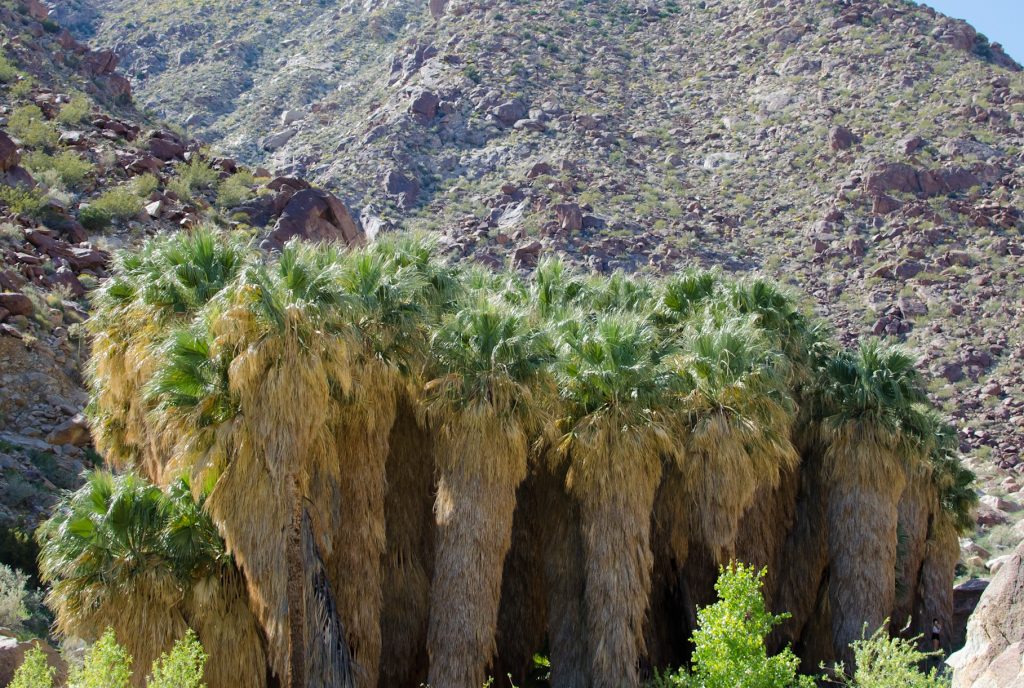
Though palm trees have been planted all across the LA region, Washingtonia filifera is the only palm species that naturally occurs in California.
FAMILY
Arecaceae, the palm family
RANGE
The Sonoran and Mojave Deserts in southeast California, the Colorado Desert in Nevada and Arizona, and parts of Baja California
Important Environmental Factors

Low or very high seasonal variation in rainfall

Low tree canopy cover

Very low annual rainfall (<250 millimeters)
Appearance and Ecology
California fan palm oases are often found growing along fault lines, where groundwater has been forced closer to the surface. The palms can form dense groves of trees up to 75 feet tall. One identifying characteristic of California fan palm is the “shag” of dead leaves around its trunk. Instead of falling off at the end of the summer growing season, the palm leaves stay attached to the trunk. These dead leaves are highly flammable, but the tree itself is fire resistant because the palm’s trunk will rarely catch fire.
Human Uses
California palm oases were often used as village sites by the Kamia and Cahuilla Native American tribes. These oases provided water, shade, and food. The fruits of California palm trees (which taste similar to commercial dates) could be eaten fresh or dried and made into meal. Palm leaves could be used as thatching for roofs, and the fibers were woven into baskets and clothing. Today, California fan palm continues to be planted as an ornamental tree in managed landscapes.
Current Status
California’s only native palm is not as common as it once was. Many natural palm oases have been replaced by urban development or converted to agricultural land. California fan palms can also be stressed by decreased water resources, which may be the result of groundwater pumping or competition from other plants (including mesquite and the highly invasive saltcedar plant, Tamarix ramosissima).

Data source:
Species records for distribution model provided by iNaturalist and Calflora
References: